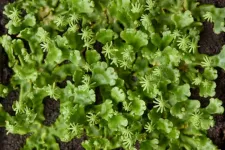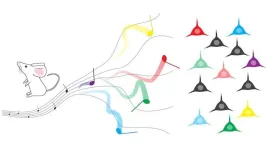(Press-News.org) It’s widely recognized that health care is a growing expense for many Americans. However, what health care companies do with their profits — some made through government programs such as Medicare — remains murky.
To investigate this question, researchers at Yale School of Medicine (YSM) analyzed financial reports from 92 large U.S. health care companies. The results were published on Feb. 10 in a research letter in JAMA Internal Medicine.
The research team focused on U.S. health care companies on the Standard & Poor’s 500 (S&P 500), which follows the 500 largest companies traded on stock exchanges, to see how much money was spent on shareholder payouts in the last two decades. The analysis included pharmaceutical and biotechnology companies, insurance companies, medical-supply companies, and large health care facilities such as for-profit hospitals.
Over the past 20 years, health care companies spent 95% of their net income on shareholder payouts, totaling up to $2.6 trillion, according to the research findings. Shareholder payouts also tripled over this period — a trend largely shaped by a few powerful pharmaceutical companies, the research team noted.
These findings reveal that “funds are being distributed back out to shareholders rather than being put back into the health care system,” says Dr. Cary Gross, senior author of the study and professor of medicine at YSM. These decisions directly impact the health and health care of regular Americans, he says.
Tracking taxpayer money that funds health care
Health care is one of the largest sectors of the U.S. economy. In 2023, health care accounted for 17% of the country’s gross domestic product, the total monetary value of all goods and services provided during that year.
Of the $5 trillion spent by the United States on health care in 2023, roughly 70% was funded “in some shape or form” by taxpayer money, says Gross. This includes tax breaks for employer-based health insurance as well as direct funding via Medicare and Medicaid.
As insurance premiums and drug prices have risen in recent years, pharmaceutical companies often argue that drug prices are high because of the up-front cost of research and development, says lead author Dr. Victor Roy, who completed the research while a fellow at YSM and is now an assistant professor of family medicine and community health at the University of Pennsylvania.
However, while researching one health care company, Roy noticed that most of the profits from a new medication went to shareholder payouts rather than reimbursing the cost of development.
During his tenure in the National Clinician Scholars Program at YSM, Roy worked with Gross to collect data on 92 S&P 500 health care companies between 2001 and 2022 to see whether a similar trend could be spotted among other large health care companies in the U.S. economy. The team focused on two types of payouts: dividends, where profits go directly to shareholders, and buybacks, where companies buy their own shares to increase their value.
Regulating profits to support health care
The team found that, similarly to tech and finance, most of the profits realized by health care companies were redistributed to shareholders. Overall, shareholder payouts increased 315% between 2001 and 2022 — a trend driven in part by 19 health care companies on the S&P 500 that accounted for 80% of the total payouts over this period.
The decision to prioritize shareholder payouts over reinvesting in health care by this small group of powerful companies likely influences the cost of health care for many Americans, says Roy.
“When shareholders expect greater payouts year in and year out, that has an impact on affordability,” he says. “One of the ways that [health care companies] make money is to keep prices high — or raise them.”
Because so much money in the health care industry comes from taxpayers, the United States could regulate the industry differently than they do other sectors, says Gross. For example, lawmakers could require some profits to be returned into the health care sector to help pay wages for health workers or finance drug development — similar to the way that companies applying for government grants to produce superconductors have been incentivized to help finance childcare for manufacturing and construction workers.
“Some might say, these are for-profit companies, so their goal is to make a profit,” says Gross. But “health care is a right, not a privilege. You can choose when to buy a car. You can’t choose to have a heart attack. As costs of care keep rising, it’s crucial to ask where our health dollars are going.”
END
Health care company payouts favor shareholders, new research shows
2025-02-10
ELSE PRESS RELEASES FROM THIS DATE:
Glucose-lowering medications and risk of COPD exacerbations in patients with type 2 diabetes
2025-02-10
About The Study: The results of this comparative effectiveness research study suggest that sodium-glucose cotransporter-2 inhibitors and glucagon-like peptide-1 receptor agonists (GLP-1RAs) were associated with a reduced risk of moderate or severe chronic obstructive pulmonary disease (COPD) exacerbations compared with dipeptidyl peptidase 4 inhibitors in adults with type 2 diabetes and active COPD. This may inform prescribing of glucose-lowering medications among patients with type 2 diabetes and active COPD.
Corresponding Author: To contact the corresponding author, Elisabetta Patorno, MD, DrPH, email epatorno@bwh.harvard.edu.
To access ...
Low to moderate prenatal alcohol exposure and facial shape of children at ages 6 to 8
2025-02-10
About The Study: Low to moderate prenatal alcohol exposure was associated with characteristic changes in the faces of children, which persisted until at least 6 to 8 years of age. A linear association between alcohol exposure levels and facial shape was not supported.
Corresponding Author: To contact the corresponding author, Evelyne Muggli, MPH, email evi.muggli@mcri.edu.au.
To access the embargoed study: Visit our For The Media website at this link https://media.jamanetwork.com/
(doi:10.1001/jamapediatrics.2024.6151)
Editor’s Note: Please see the article for additional information, including other authors, ...
Earth’s inner core is less solid than previously thought
2025-02-10
The surface of the Earth’s inner core may be changing, as shown by a new study from USC scientists that detected structural changes near the planet’s center, published today in Nature Geoscience.
The changes of the inner core has long been a topic of debate for scientists. However, most research has been focused on assessing rotation. John Vidale, Dean’s Professor of Earth Sciences at the USC Dornsife College of Letters, Arts and Sciences and principal investigator of the study, said the researchers “didn’t set out to define the physical nature of the inner core.”
“What we ended up discovering is evidence that the near surface of Earth’s ...
Discovering the genetics of climate adaptation
2025-02-10
As climate change accelerates, plants face mounting pressure to adapt to shifting ecosystems and environmental conditions. This challenge is especially urgent for crops – plants resilient to drought and heat are essential to secure food supply in an unpredictable future. Fortunately, plants can adapt remarkably well to diverse environments and climates: Arabidopsis thaliana, for example, thrives in regions as climatically distinct as Sweden and Italy.
Understanding how plants naturally adapt to different ...
How does the brain differentiate new stimuli from old ones?
2025-02-10
The cerebral cortex is the largest part of a mammal’s brain, and by some measures the most important. In humans in particular, it’s where most things happen—like perception, thinking, memory storage and decision-making. One current hypothesis suggests that the cortex’s primary role is to predict what’s going to happen in the future by identifying and encoding new information it receives from the outside world and comparing it with what was expected to occur.
A new study published today in the ...
Eating gradually increasing doses of store-bought peanut butter enables children with high-threshold allergy to safely consume peanuts
2025-02-10
Children with high-threshold peanut allergy who ate gradually larger doses of store-bought peanut butter achieved significantly higher and long-lasting rates of desensitization compared to those who avoided peanuts, according to a new study led by researchers at the Icahn School of Medicine at Mount Sinai.
Results of the trial, sponsored and funded by the National Institutes of Health’s National Institute of Allergy and Infectious Diseases, appear in the Monday, February 10 issue of NEJM Evidence [https://doi.org/10.1056/EVIDoa2400306].
“Our study results suggest a safe, inexpensive and effective pathway ...
Therapy helps peanut-allergic kids tolerate tablespoons of peanut butter
2025-02-10
Eating gradually increasing doses of store-bought, home-measured peanut butter for about 18 months enabled 100% of children with peanut allergy who initially could tolerate the equivalent of at least half a peanut to consume three tablespoons of peanut butter without an allergic reaction, researchers report. This easy-to-implement treatment strategy could potentially fulfill an unmet need for about half of children with peanut allergy, who already can tolerate the equivalent of at least half a peanut, considered a high threshold. The findings come from a trial sponsored and funded by the National Institutes of Health’s National ...
Fly with a fake termite face capable of infiltrating and socialising in a termite mound
2025-02-10
Nature is full of impostors, and many of them are found in the insect world. Certain species, such as the bee fly or the ant spider, are experts at misdirection and their ability to confuse predators or prey is on a par with that of John Travolta in Face/Off and Arya Stark in Game of Thrones. However, never before has a blow fly been observed successfully living in cognito among termites.
Now, for the first time ever, an international study led by the Institute of Evolutionary Biology (IBE), a joint centre of the Consejo Superior de Investigaciones Científicas (CSIC) (the Spanish National Research Council (CSIC)) and Pompeu Fabra University (UPF), ...
Impact of intermediate-term oral contraceptive use on oxidative stress, lipid profile, and liver function in Iraqi women
2025-02-10
Background and objectives
Oral contraceptive pills (OCPs) are commonly used for contraception, but their long-term effects on oxidative stress, lipid profiles, and liver function remain unclear. This study aimed to evaluate the impact of intermediate-term OCP use (Yasmin) on oxidative stress, lipid profile, and liver function, with particular emphasis on antioxidant markers, lipid metabolism, and hepatic enzyme activity, to better understand the potential metabolic and hepatic effects.
Methods
A case-control study was conducted in Maysan Governorate, Iraq, involving 150 women (100 OCP users and 50 ...
Nurses worldwide experience stress, loss, and violence
2025-02-10
A first-of-its-kind study provides a snapshot of the substantial mental health burden on nurses around the world. Published in the journal International Nursing Review, the research documents the impact of three years of intense working conditions brought on by the COVID-19 pandemic.
“Our study describes how nurses are affected by stressors in their workplace and shows how the stress carries over into their home life. The personal losses from the pandemic complicate this picture as there could easily be lingering grief in a third of the workforce,” said Allison Squires, ...




